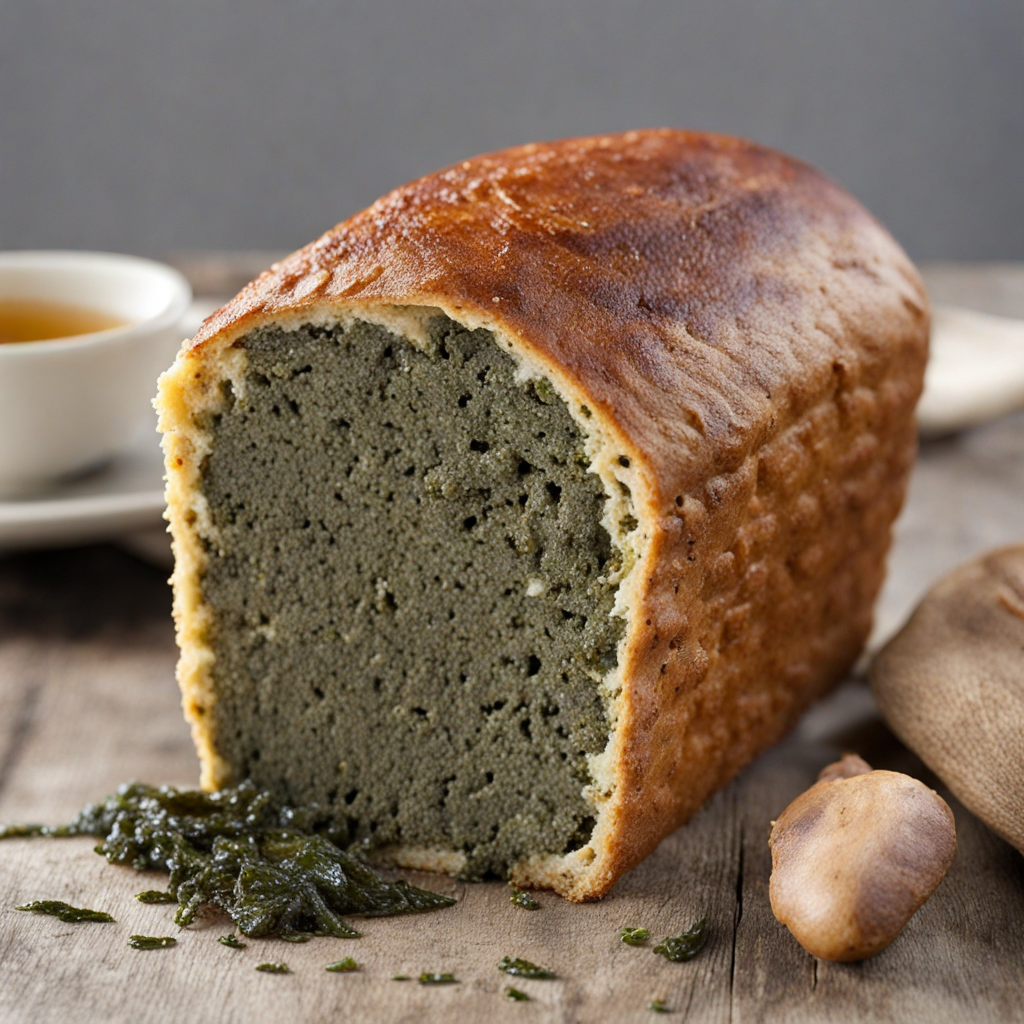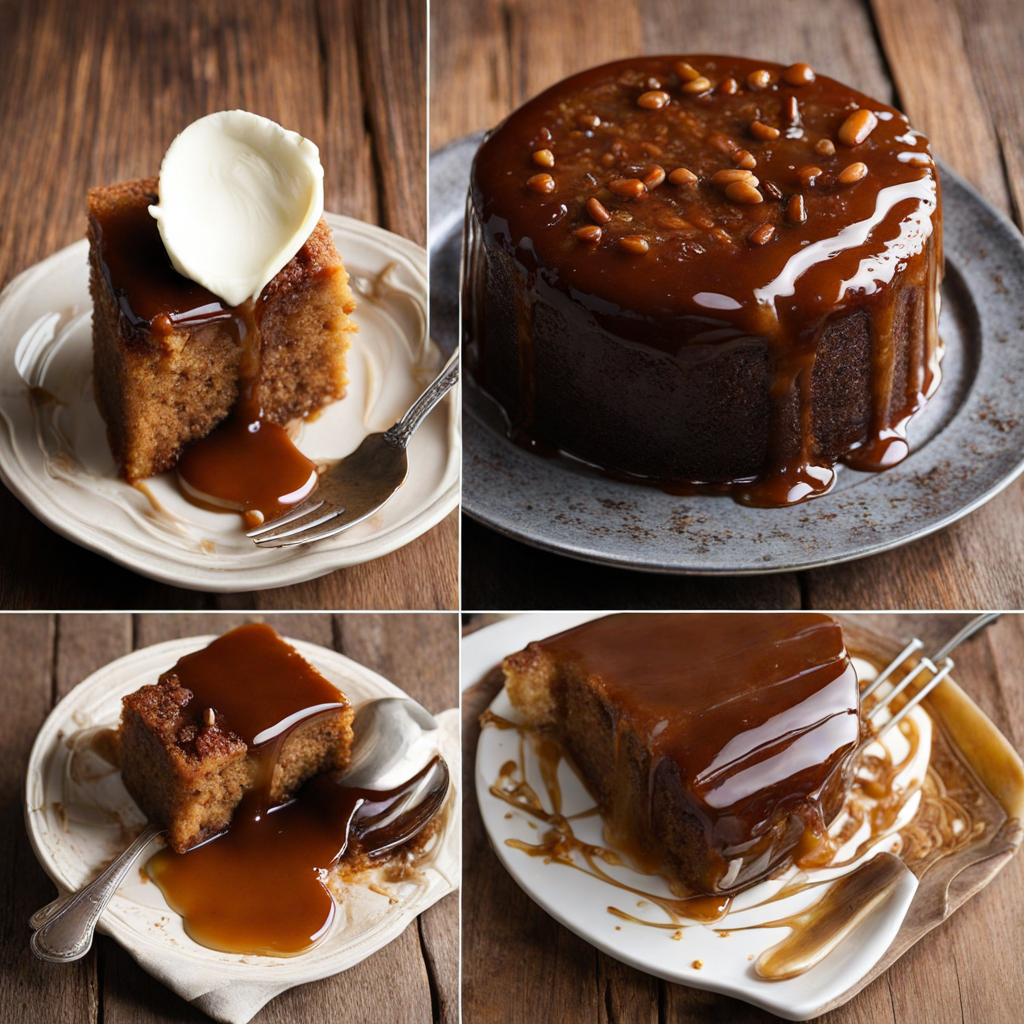Black Pudding
Black pudding is a traditional British dish that falls under the category of blood sausage, primarily made from pork blood, fat, and a variety of seasonings. The rich, dark color of the pudding comes from the blood, which is mixed with oats or barley to create a hearty texture. This unique combination results in a savory flavor profile that is both earthy and robust, often enhanced with spices such as pepper, nutmeg, and thyme. The use of high-quality ingredients is crucial, as it significantly influences the taste and texture, making every artisanal batch distinct from mass-produced varieties. When cooked, black pudding develops a crispy exterior while maintaining a moist, crumbly interior. It can be sliced and pan-fried, grilled, or baked, allowing for a variety of cooking methods that bring out its flavors. The contrast between the crispiness on the outside and the soft, rich filling creates a delightful experience for the palate. Many enjoy black pudding as part of a traditional English breakfast, accompanied by eggs, bacon, and toast, or as a gourmet ingredient in modern dishes, showcasing its versatility in both hearty meals and elegant presentations. Beyond its taste, black pudding carries a sense of heritage and cultural significance in the UK. It has been a staple for centuries, often associated with regional specialties and family recipes passed down through generations. While some may find the idea of blood sausage unusual, those who embrace it often describe a depth of flavor that is unmatched by other meats. Black pudding invites adventurous eaters to explore its unique taste, offering a glimpse into the culinary traditions of the United Kingdom.
How It Became This Dish
The History of Black Pudding: A Culinary Journey Through Time Origins: The Birth of Black Pudding Black pudding, a distinct delicacy most commonly associated with the United Kingdom and Ireland, boasts a history as rich and complex as its flavor. Its origins can be traced back to ancient cultures, where the practice of blood sausage-making was a means of preserving meat and utilizing every part of the animal. Although variations of blood sausage have existed across Europe and beyond—most notably in France (boudin noir) and Germany (blutwurst)—Britain's black pudding has carved its own niche. The word "pudding" itself has evolved over centuries. In medieval England, it was derived from the Latin "botulus," meaning sausage, and originally referred to all types of sausages. The earliest records of black pudding date back to the 15th century, with references appearing in various English texts. The dish was traditionally made from pig's blood, mixed with fat, oats, and spices, creating a rich and hearty meal suitable for rural communities. Cultural Significance: A Staple of British Cuisine Throughout history, black pudding has held a significant place in British culture, particularly in the culinary traditions of the north of England and Ireland. It has been a staple in the diets of working-class families, providing a nutritious and economical source of protein. The dish was often a part of breakfast, served alongside eggs, bacon, and baked beans—a hearty start to the day that sustained laborers through their demanding work. In the context of British cuisine, black pudding is often associated with regional pride, particularly in areas such as Lancashire, Bury, and Stornoway in the Outer Hebrides. Bury black pudding, in particular, has gained Protected Geographic Indication (PGI) status, akin to the French AOC, which recognizes its unique production methods and heritage. This distinction has elevated the status of black pudding within the culinary world, promoting its production and consumption while simultaneously preserving its traditional roots. Development Over Time: From Peasant Food to Gourmet Delicacy As time progressed, black pudding evolved alongside societal changes. The Industrial Revolution brought about significant shifts in food production and consumption. The rise of urban centers meant that traditional ways of preparing food were often replaced by mass production. Black pudding, once a home-cooked staple, began to be produced commercially, with factories emerging to meet the demands of the growing population. Despite its humble beginnings, black pudding has undergone a renaissance in recent decades. Chefs and food enthusiasts have rediscovered its culinary potential, incorporating it into modern dishes and elevating it to gourmet status. This shift can be attributed to the broader movement towards embracing traditional and regional foods, as well as the locavore movement, which emphasizes the importance of sourcing local ingredients. Contemporary chefs have taken black pudding beyond the breakfast plate, showcasing its versatility. It can now be found in a range of dishes, from salads and terrines to gourmet burgers and tapas. Notable chefs like Heston Blumenthal and Marco Pierre White have featured black pudding in their menus, further solidifying its place within haute cuisine. This evolution reflects a growing appreciation for the intricate flavors and textures that black pudding offers, as well as a desire to connect with culinary heritage. Regional Variations: The Many Faces of Black Pudding While the core ingredients of black pudding remain consistent, regional variations add diverse flavors and textures to the dish. For example, the traditional Stornoway black pudding, made on the Isle of Lewis, is known for its distinctive flavor, achieved through the use of a specific blend of spices and the inclusion of oatmeal. The Bury black pudding, on the other hand, incorporates a higher proportion of fat and is characterized by its dark, rich color and smooth texture. In Ireland, black pudding is often enjoyed as part of a traditional Irish breakfast, alongside white pudding—another delicious sausage made from pork and oatmeal. The Irish version is celebrated for its unique blend of spices, and it has garnered international acclaim, with brands like Clonakilty and Kelly’s becoming household names. Moreover, black pudding has found its way into international cuisine, inspiring chefs around the world. In Spain, for instance, morcilla, a type of blood sausage, shares similarities with black pudding and is often incorporated into tapas. This cross-cultural exchange highlights the universal appeal of blood sausages and their ability to adapt to various culinary traditions. Black Pudding Today: A Culinary Icon In contemporary society, black pudding stands as a symbol of resilience and creativity in British cuisine. It has transcended its origins as a peasant food and has been embraced by food lovers and enthusiasts. As a result, black pudding festivals have emerged across the UK, celebrating this beloved dish with tastings, cooking competitions, and workshops that educate people about its history and preparation. Furthermore, the rise of social media and food blogs has contributed to the resurgence of traditional foods, with black pudding often featured in visually appealing dishes that entice a new generation of foodies. The dish is revered for its deep, complex flavors, and its ability to pair seamlessly with a variety of ingredients, from sweet apple chutneys to savory accompaniments like fried onions or creamy sauces. Conclusion: The Future of Black Pudding As we look to the future, black pudding is likely to continue its journey of adaptation and reinvention. While it remains steeped in tradition, its place on modern menus is a testament to the evolving nature of cuisine and the importance of preserving culinary heritage. The dish serves as a reminder of the ingenuity of our ancestors, who made use of every part of the animal, and it encourages contemporary chefs to honor these practices while pushing the boundaries of culinary creativity. In a world increasingly focused on sustainability and local sourcing, black pudding embodies the principles of resourcefulness, community, and tradition. As we savor each bite of this rich and flavorful dish, we partake in a culinary legacy that spans centuries, connecting us to our past while inviting us to explore the future of food.
You may like
Discover local flavors from United Kingdom







